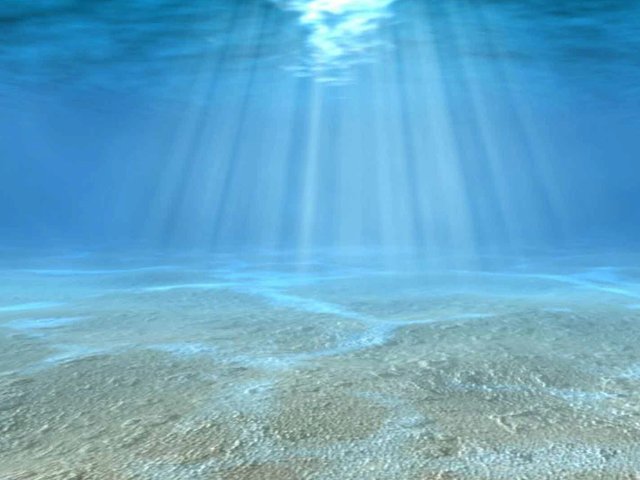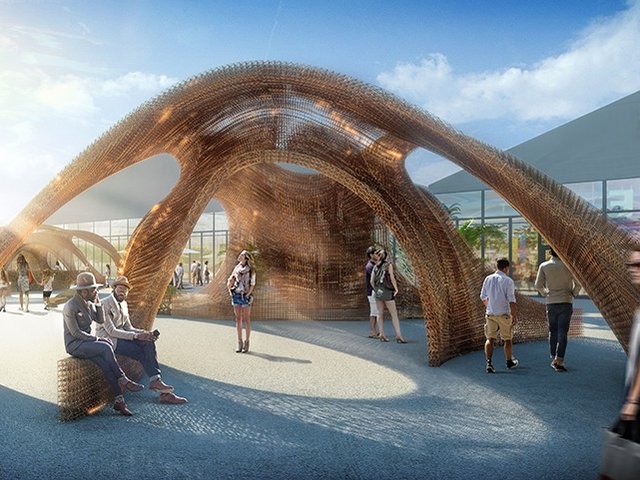Miami Beach’s pioneer developer John Stiles Collins first dreamed of turning the area—a mosquito-infested mangrove swamp until it was cleared and dredged by migrant labourers—into the avocado capital of America.
Collins and the car-part magnate Carl Fisher soon realised that there was a fortune to be made in building a winter playground for wealthy Wasps; segregation kept Jews south of 5th Street and an ordinance forced African-Americans back to the mainland every night. “There’s almost nothing natural about Miami Beach—it all had to be created,” says Frank Luca, the chief librarian of the Wolfsonian-FIU, who has co-organised Miami Beach: from Mangrove to Tourist Mecca (until 17 January 2016), the third of three exhibitions marking the city’s centenary. This selection from the institution’s vast collection illustrates the rise of resort hotels in the 1920s, Miami Beach’s rapid recovery from the great hurricane of 1926 and how its many Art Deco hotels became temporary barracks for the US Army Air Forces after the attack on Pearl Harbor. “Clark Gable was one of the celebrities who ended up training here,” Luca says. Why Miami Beach? German U-boats were off the Atlantic coast and the subtropical climate prepared airmen for conditions in the South Pacific, he says.
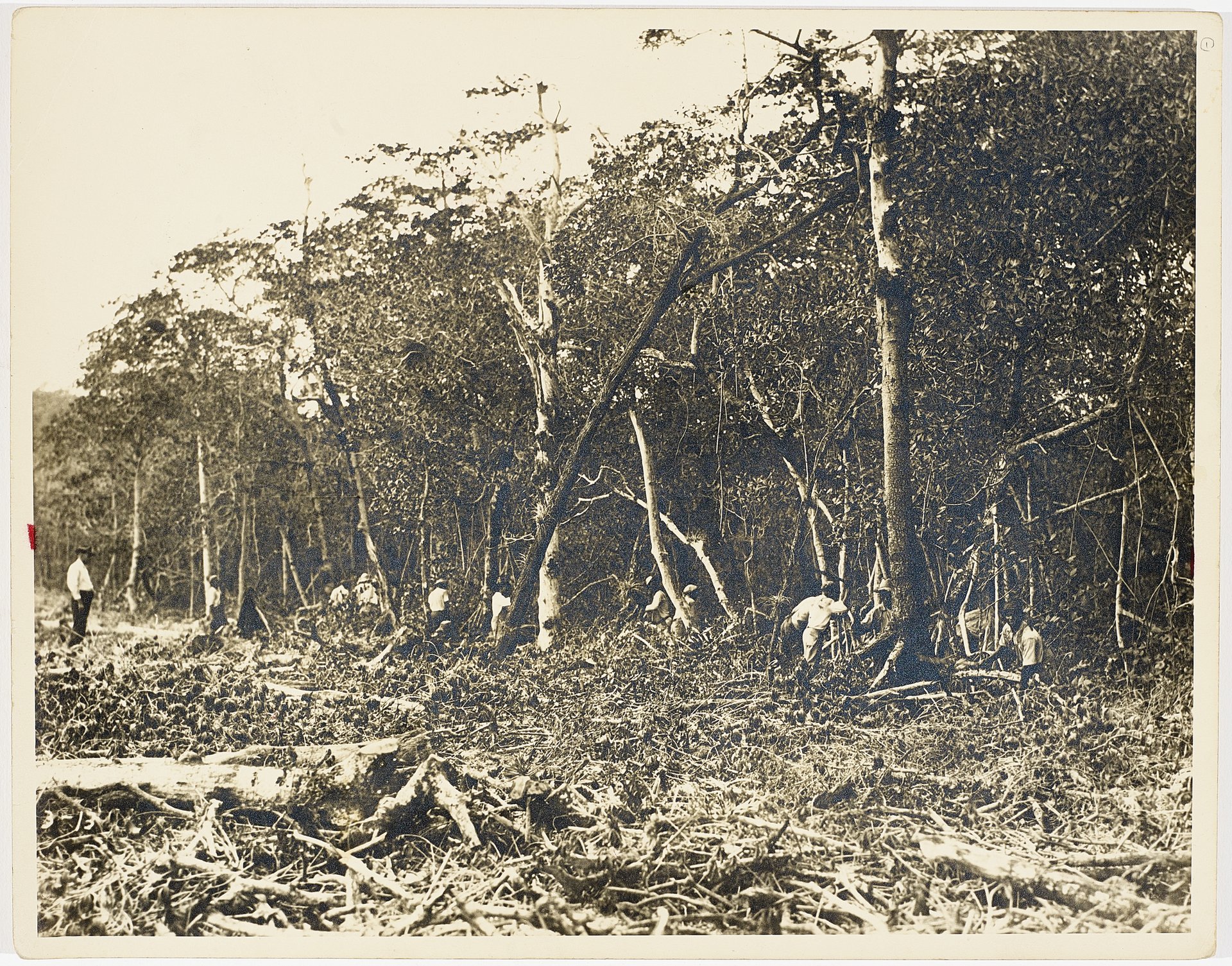
Clearing Lincoln Road (1917-18)
Migrant workers, many from the Bahamas, cut down the mangroves, drained the swampland, dredged canals and built bridges to pave the way for Miami Beach to become a resort in the 1920s for wealthy northerners looking to escape
the cold.
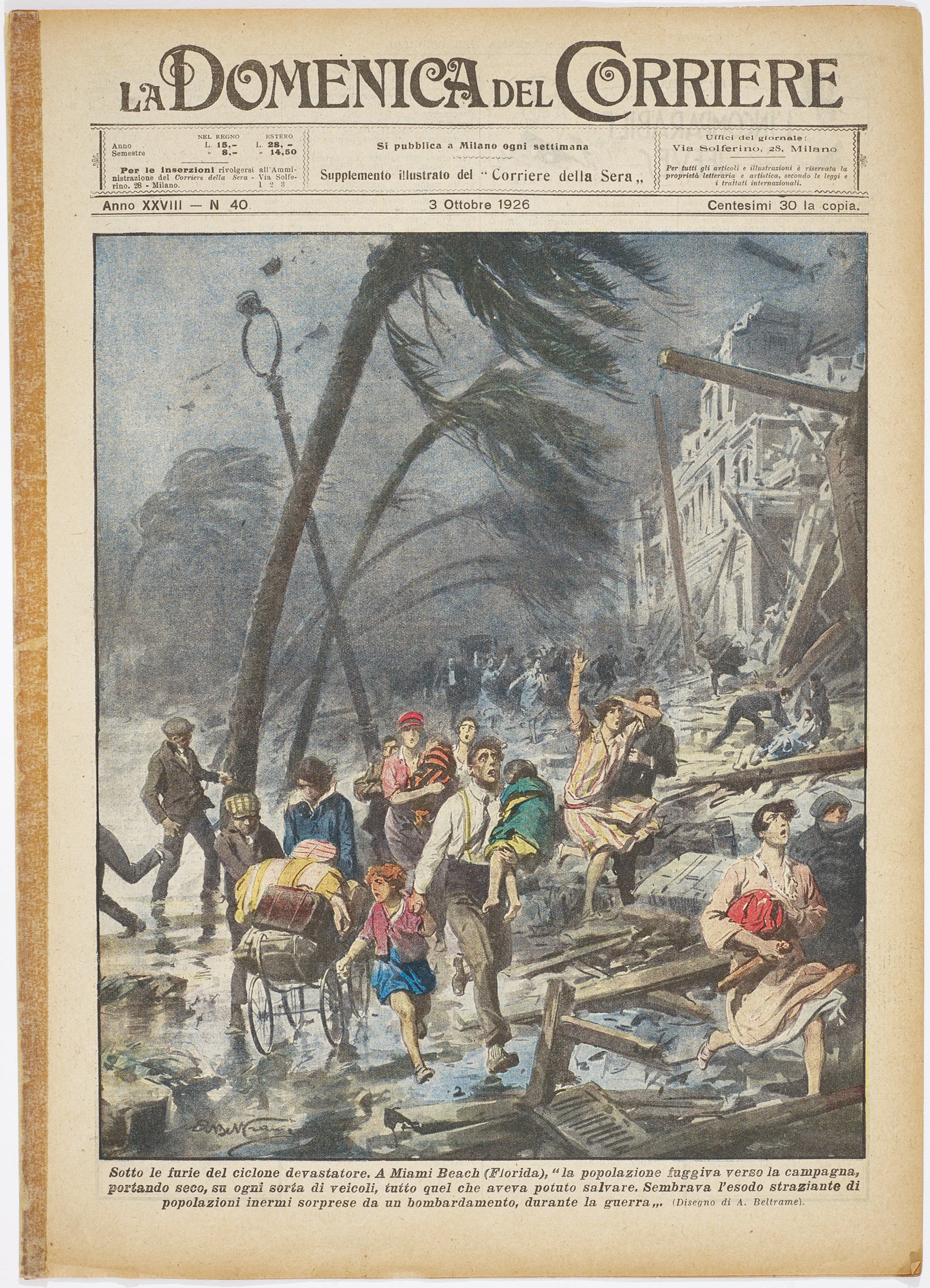
The great hurricane (1926)
Italian media covered the devastating hurricane that struck Miami Beach on 18 September 1926. Heavy rains and 125mph winds reportedly killed 113 people. Officials did their best to minimise the bad publicity, but the city’s first boom ended abruptly. By 1933, however, despite the Great Depression, construction had surpassed even the previous peak levels of 1925.
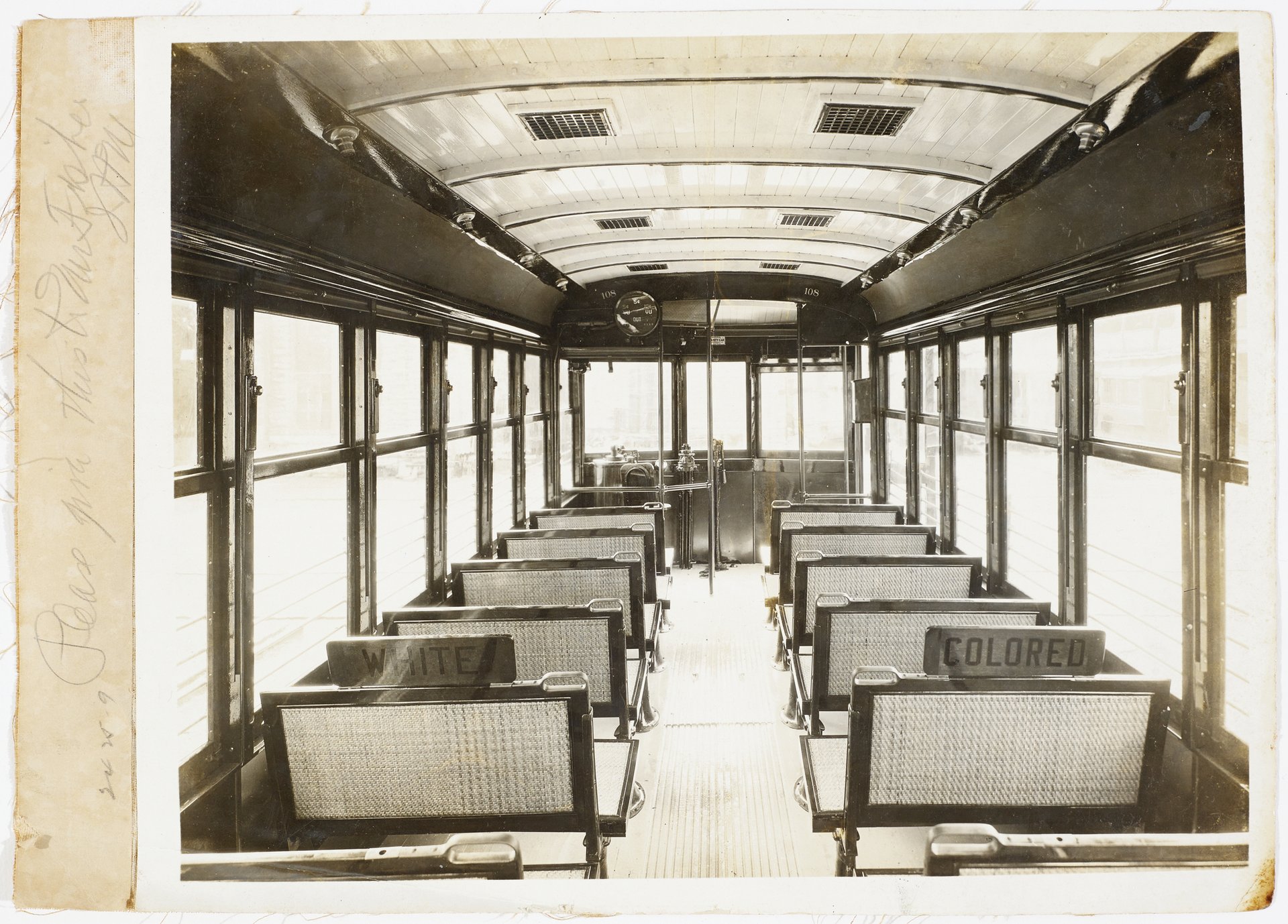
Segregated street car (around 1920)
The developer Carl Fisher built an electric trolley line to connect his resort hotels in Miami Beach with Miami. Seating was segregated and an ordinance meant that African-
Americans had to leave for the mainland every night.
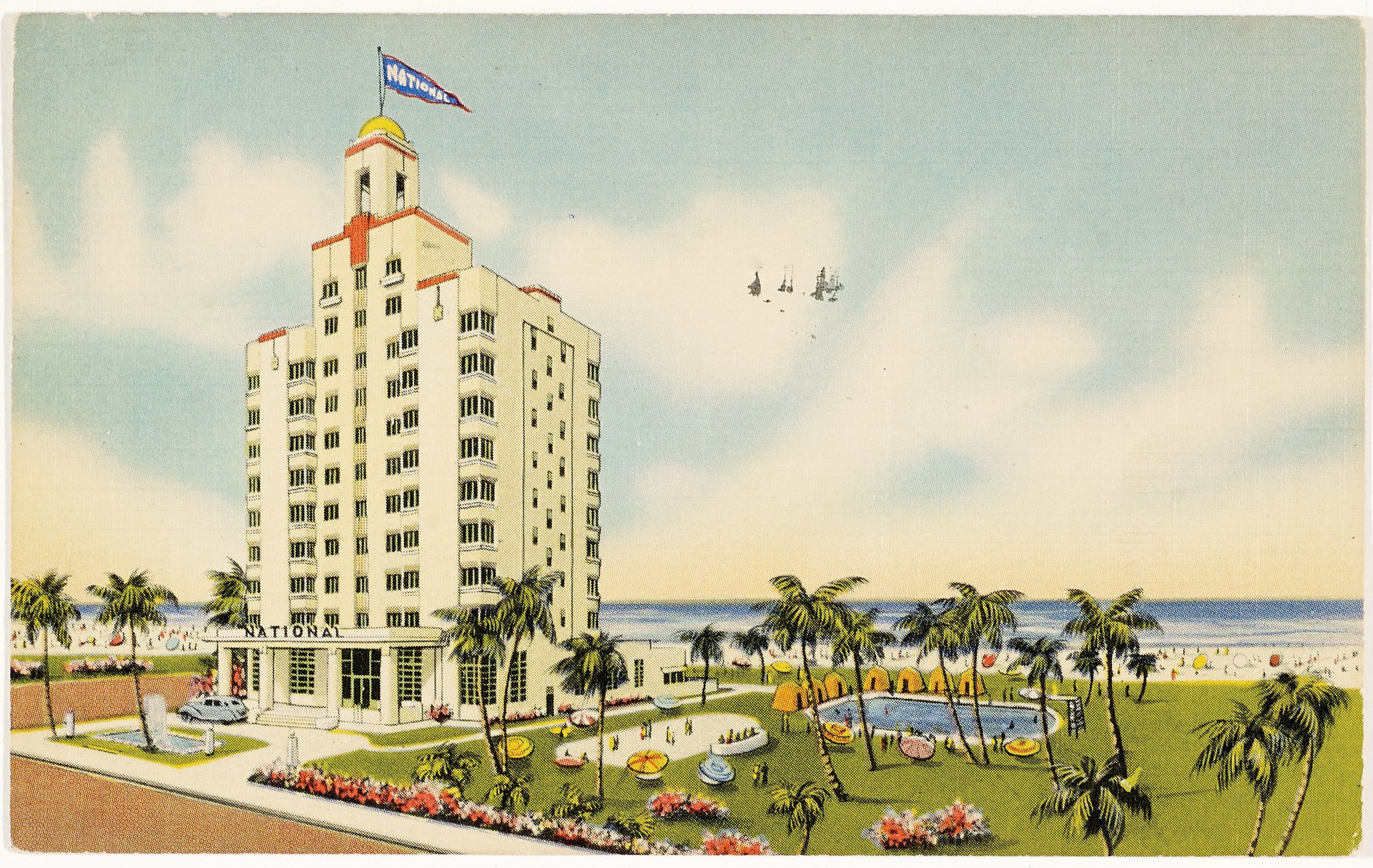
National Hotel (around 1935)
A picture-postcard view of the National Hotel, which boasted a 205ft pool—the longest in Miami Beach. The (then) high-rise luxury hotel was built at the end of the 1930s, a decade in which many low-rise hotels were built in the Art Deco style, aimed at tourists on more modest budgets.
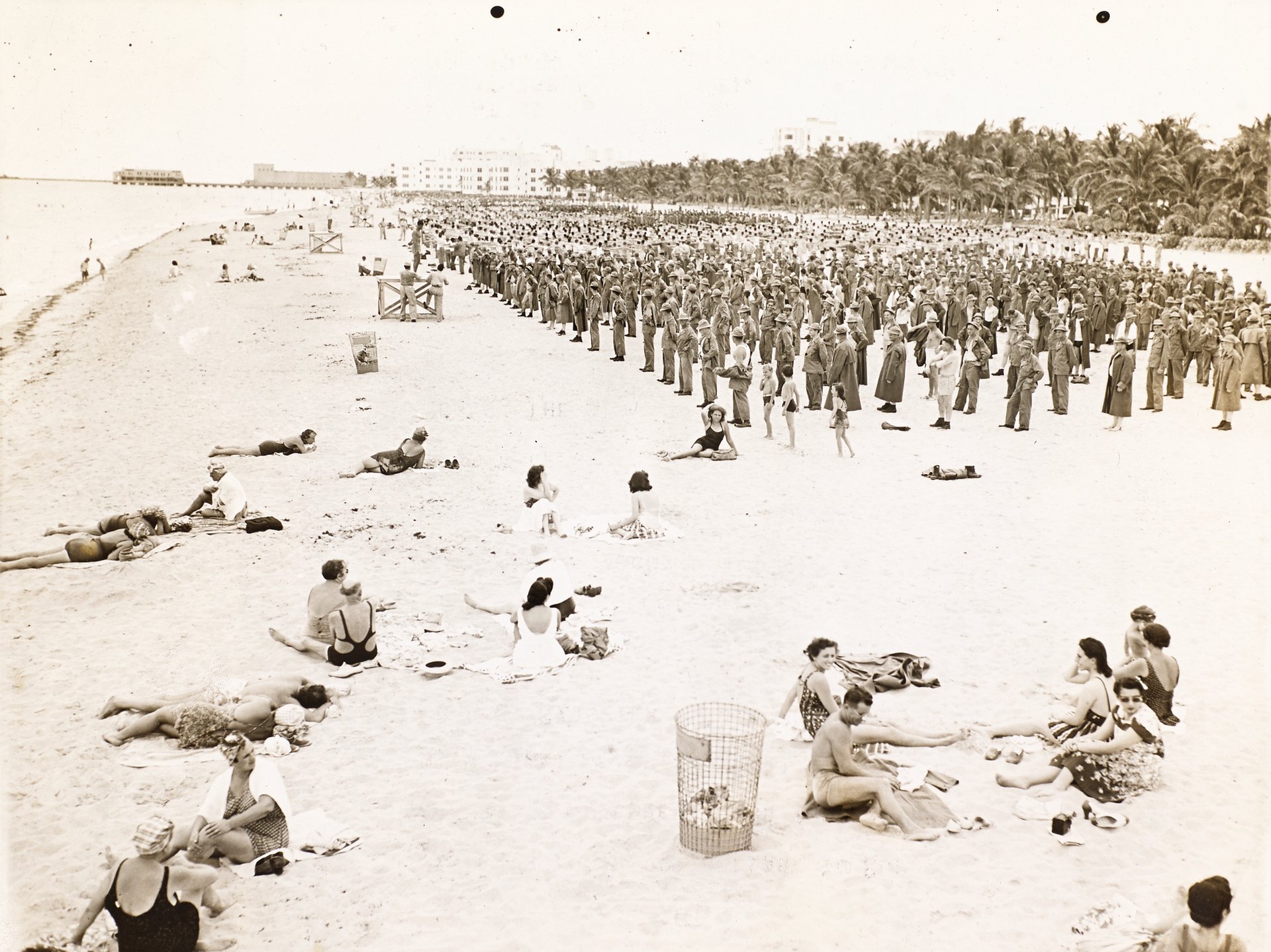
Miami Beach at war (around 1942)
More than 300 hotels in Miami Beach became barracks, and the beach an exercise ground, when the US Army Air Force arrived in 1942. Over the next two years, the training base prepared nearly half a million men for combat. Building a base from scratch would have cost five times as much as leasing hotels, a Senate committee concluded.
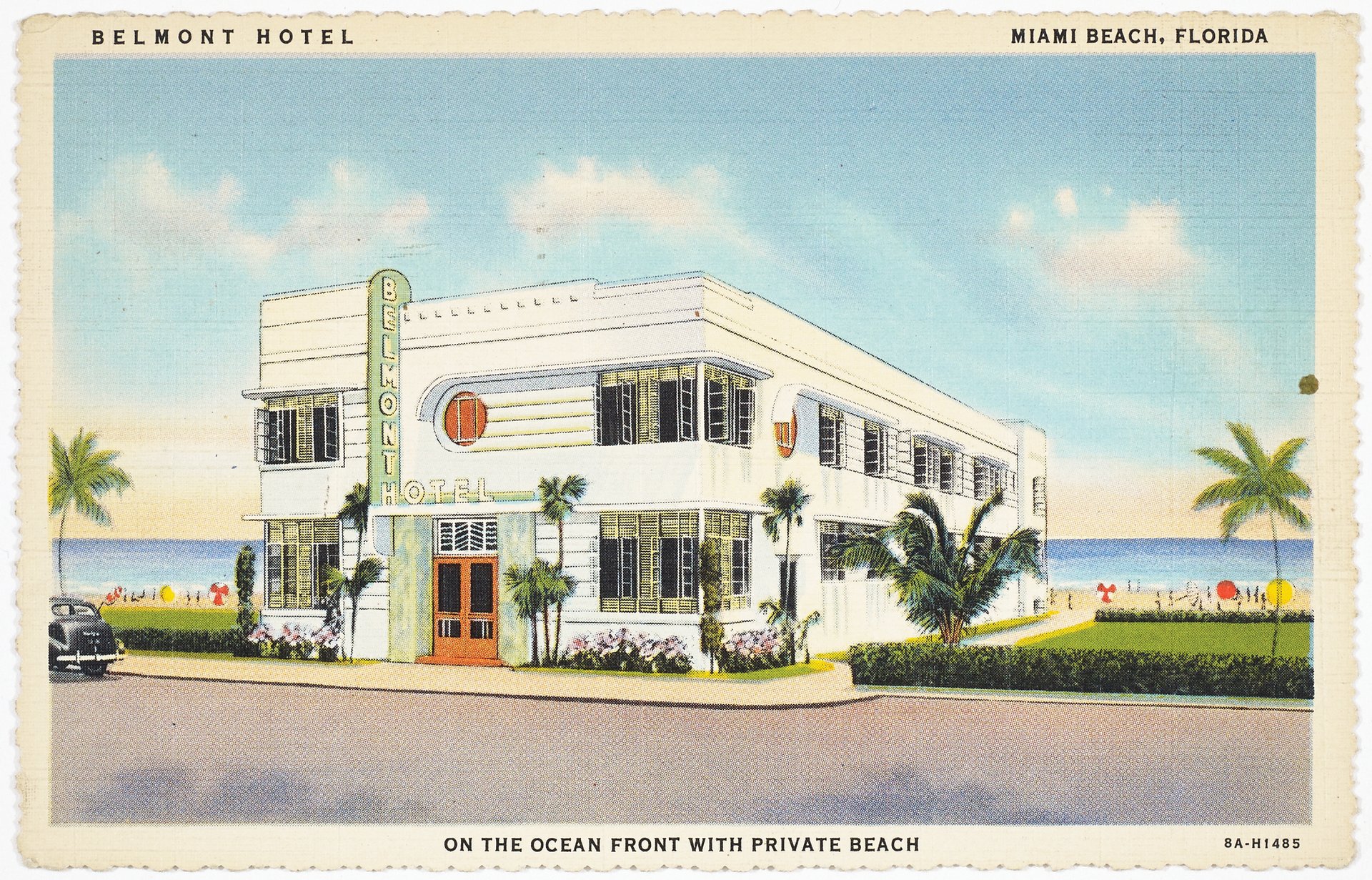
Belmont Hotel (1938)
One of many low-rise hotels built in the 1930s, the Belmont offered guests access to a private beach.
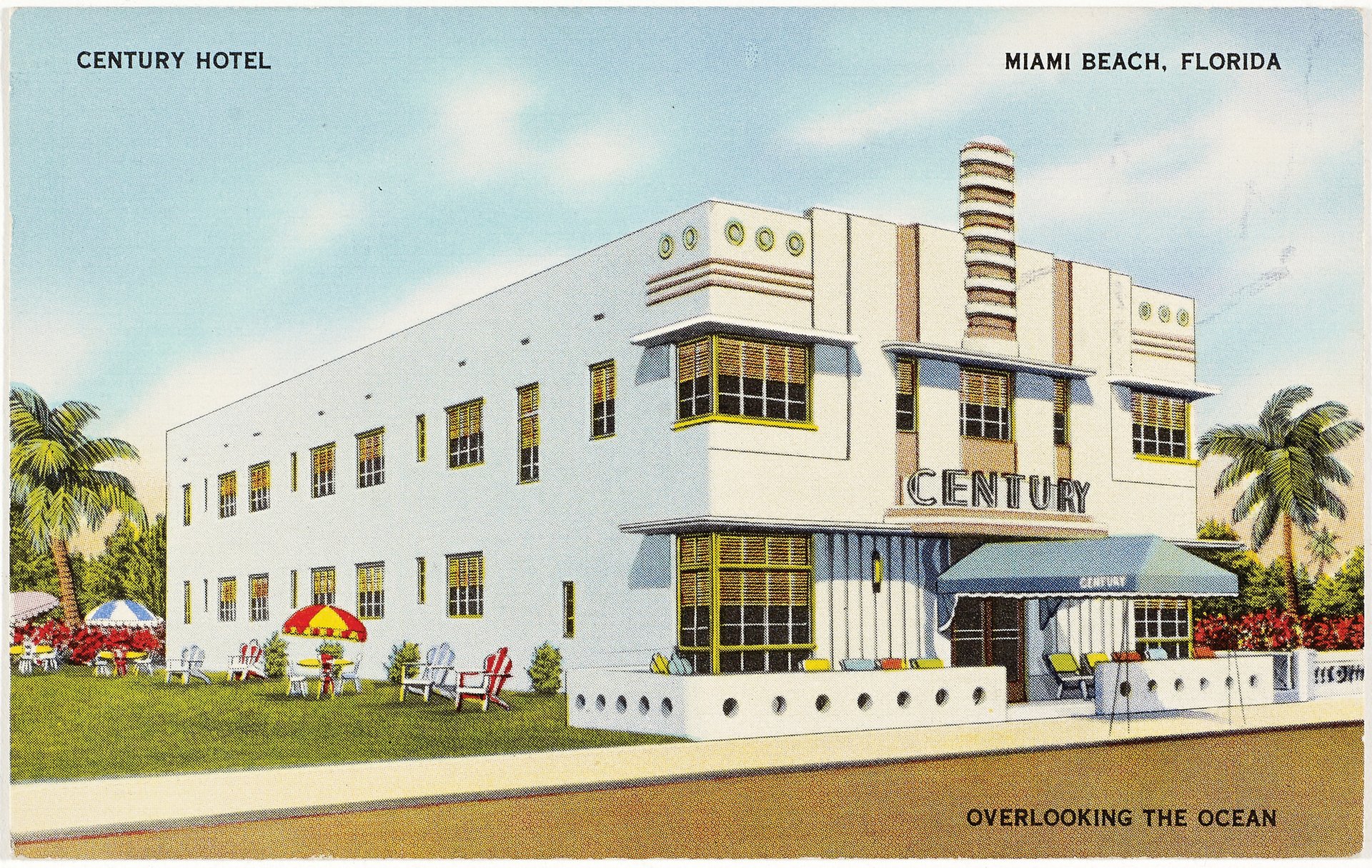
Century Hotel (around 1939)
Designed by one of Miami Beach’s most prolific architects, Henry Hohauser, the Century Hotel on Ocean Drive was one of around 300 buildings that the transplanted New Yorker built from the 1930s onwards.
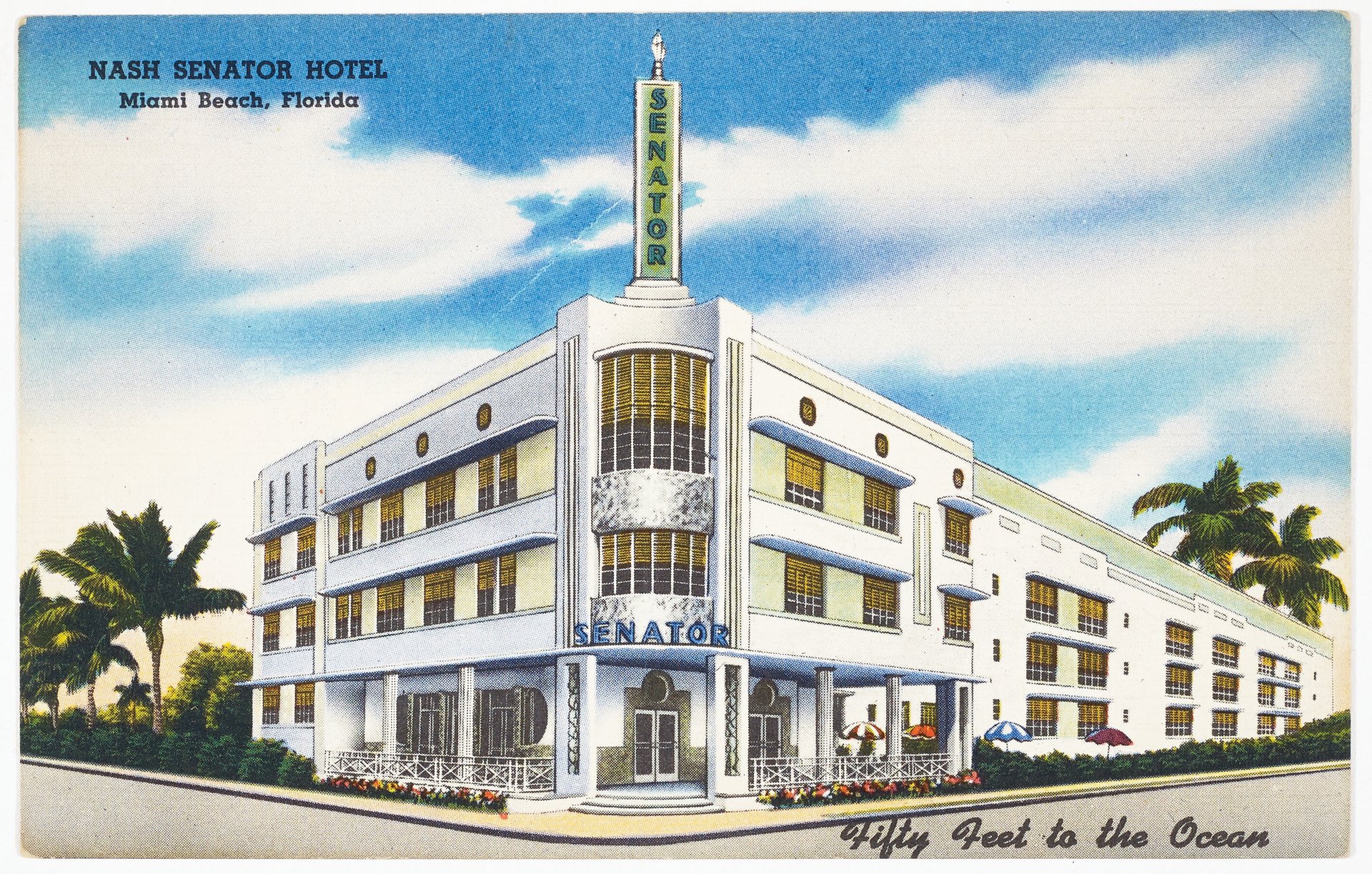
Nash Senator Hotel (around 1940)
Lawrence Murray Dixon was another busy architect in 1930s and 1940s Miami Beach, designing the Raleigh Hotel and the Victor Hotel, as well as the more modest Nash Senator, in the Art Deco style.


